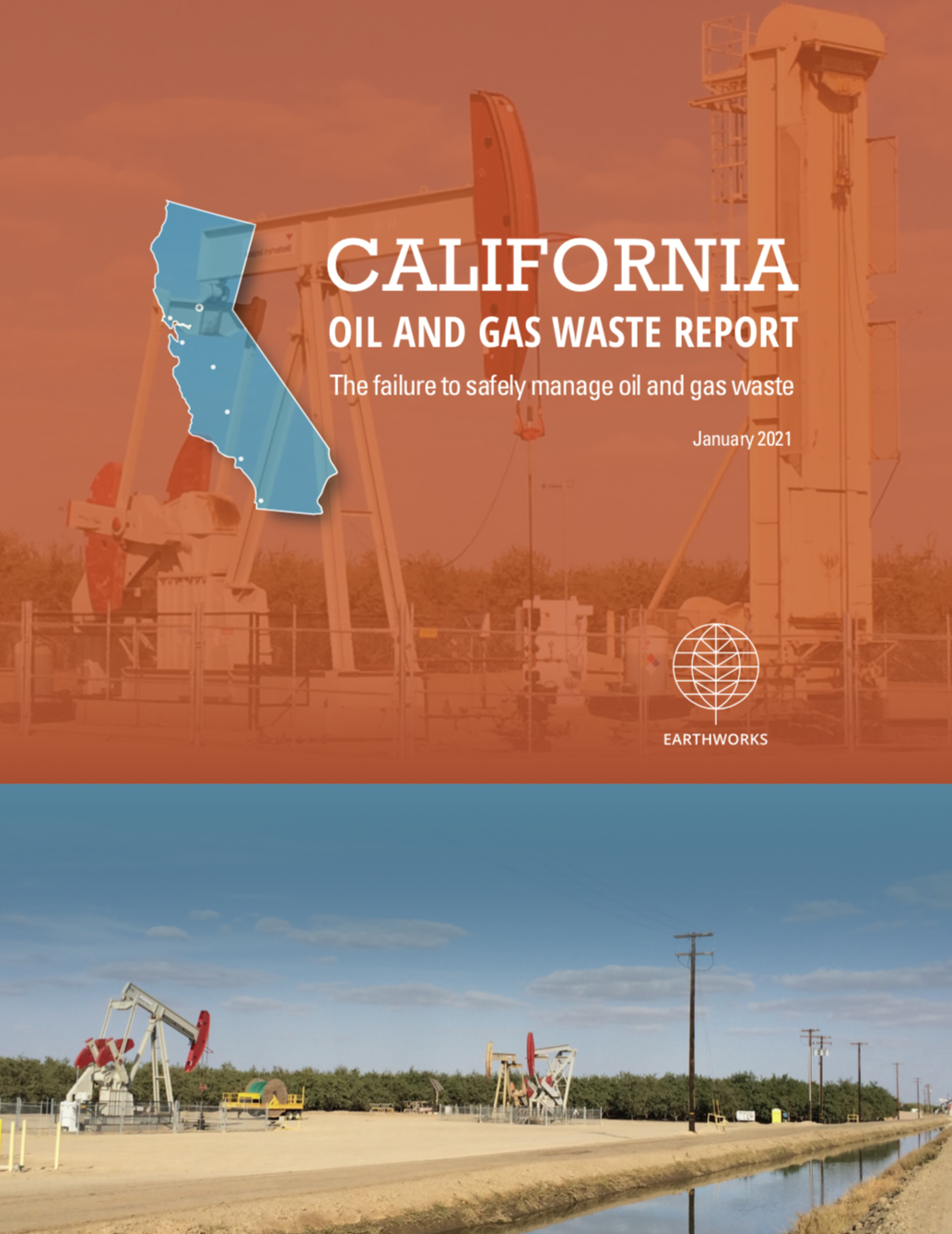Introduction
Though the Golden State is no longer a “top 5” oil and natural gas producer in the United States, it is one of the worst states when it comes to regulating the industry’s waste from decades of development that continues today – from allowing crops to be irrigated with oil and gas wastewater to storing waste in unlined pits and injecting wastewater into protected water aquifers. Both good and bad changes in regulations have occurred over the past several years, and California still has major gaps that continue to put the public and environmental health at risk. Despite a short moratorium on new steam injection and fracking permits (November. 2019 – April 2020), permits for new oil and gas wells are still issued by the hundreds every month. Even companies on the verge of bankruptcy have earned permits in 2020, calling into question California’s commitment to safely manage an industry in decline whose wells will produce dangerous waste and harm frontline communities for decades to come.
Background
California’s position as a staple of the crude oil industry runs long and deep.
Since the first well was drilled in California in 1861, oil production has steadily grown in the state. In 2017, California was fourth in the nation in crude oil production. By February 2019, it dropped to seventh largest producer in terms of barrels per month, but still produced over 160 million barrels per year.
When it comes to natural gas, California is not as significant a player. While natural gas was produced in the state as early as the 1880s, in February 2019 California ranked 14th in the nation in monthly natural gas production.
Though the most active producing region is the Central Valley, regulation of this industry is truly a statewide concern. As of 2018, California had 52,863 active oil and gas wells throughout the state, from the southern border to the far north, and 31,132 inactive wells. Though not producing oil or natural gas, inactive wells still produced waste that must be managed.

